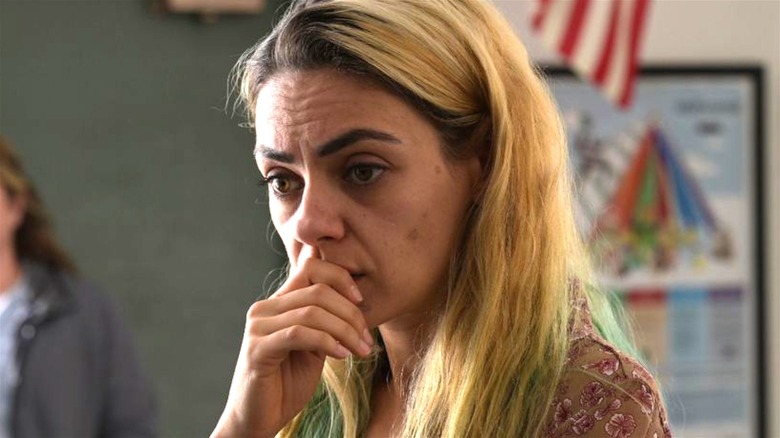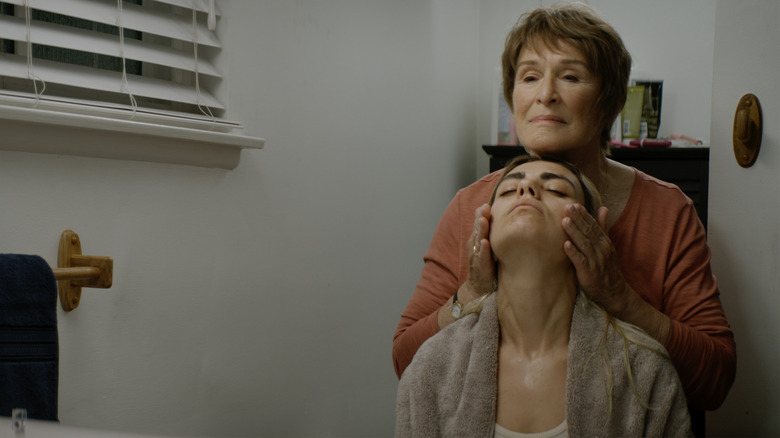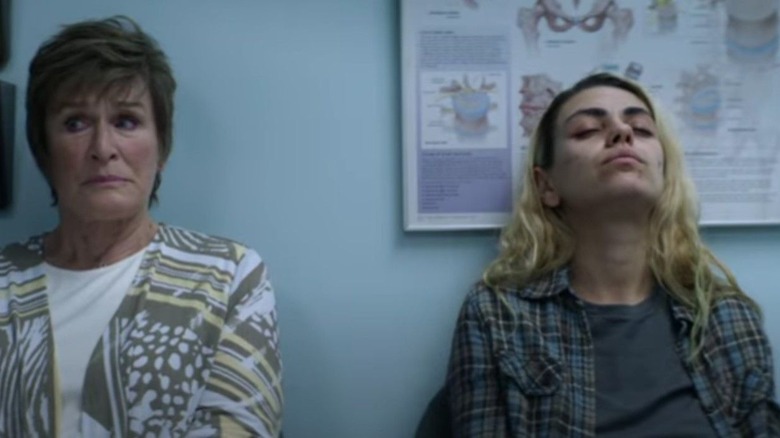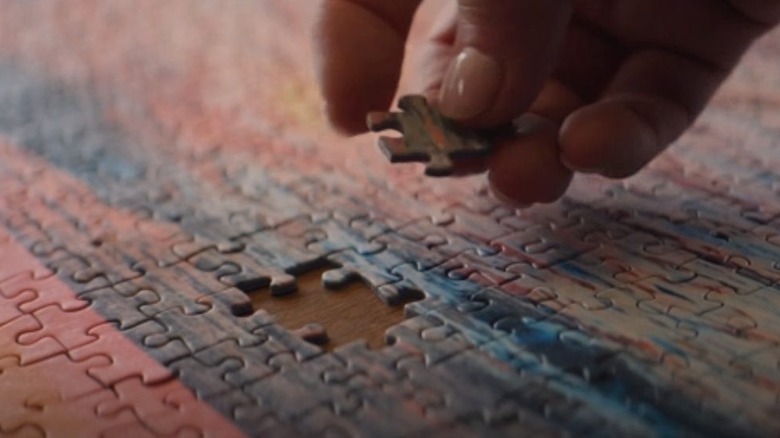The Ending Of Four Good Days Explained
It's immeasurably difficult to overcome drug addiction. It may be hard for those who have never suffered from the ailment to comprehend just how significant the urge to use can become. That's why movies about drug addiction are so important: They help people understand this complex condition in a new and vivid light. That's precisely what you get with the 2020 drama "Four Good Days."
The film stars Mila Kunis as Molly, a heroin addict who wants to make a positive change in her life. She turns to her mother, Deb (Glenn Close), for assistance, but she's consistently demonstrated a level of tough love toward her daughter. They discover there's a revolutionary new injection, Vivitrol, that would prevent her from experiencing the sensation of being high. However, she has to remain clean for four more days until she can receive it.
What follows is a quiet reflection on the struggle drug addicts trying to get clean go through every day in this country. Does Molly manage to stay clean by the "Four Good Days" ending?
What happened to Molly?
After Molly receives her first Vivitrol shot, she experiences a severe reaction. She vomits and feels pain all over her body. This references what the doctor said would happen earlier in the movie if a person gets the shot while under the influence of illicit substances.
Unfortunately, that's exactly what Molly does. After disappearing for the weekend, Molly returns home and admits to her mother that she used. Despite knowing the dangers, both of them decide to go to the doctor's office (with Deb's clean urine) so that Molly can get the shot. What follows is a sequence where the two rush to a hospital so that Molly can get the care she needs.
Not only does it make for a chilling climax, but it also illustrates an important aspect of the Vivitrol process for anyone watching who may benefit from the shots. A side effect of Vivitrol is sudden opioid withdrawal, which results in the same symptoms depicted in "Four Good Days." Hopefully, it showcases how avoiding drugs before the injection isn't merely a suggestion. It can be a matter of life and death.
Is Molly sober by the end of the film?
After Molly's health scare, we jump forward four months into the future. Molly's still at her mom's house, but she looks like a completely different person. We learn she's continued receiving Vivitrol shots and has remained clean ever since her weekend bender all those months ago.
However, that doesn't mean Molly's out of the woods yet. One of the last conversations in the film involves Molly telling her mother that instead of getting her next Vivitrol dosage on Friday (on schedule), she's postponed it until Monday. That gives her an entire weekend to once again go on a bender where she could feel the full effects of heroin. It's clear Deb wants to say something, but as we've learned throughout the film, Molly's an adult, and she needs to be responsible for her own actions. Deb's already done pretty much everything she can do to help her, and if Molly wants to use, she will.
The ending of "Four Good Days" should feel all too familiar to anyone who has experiences with addiction. Some people stay off drugs for one month, one year, or even decades. But every day must still be faced on its own, and the struggle remains very present. Molly's done well for four months, but that doesn't mean addiction isn't part of her life. All the audience, and she, can do is hope for the best and work towards a better future.
What does the puzzle symbolize in Four Good Days?
A recurring motif in "Four Good Days" is the unfinished puzzle Deb left in the garage, hoping Molly would finish it one day. By the end of the film, four months in the future, we see that Molly has completed it, and the two women sit across from one another to admire it. Then, they mix it up and prepare to rebuild the puzzle all over again.
The completed puzzle symbolizes how Molly is a changed person. In the past, when she was in the depths of heroin addiction, she couldn't finish it, and at the beginning of the film, she even mentions how she hates the puzzle. In the final scene, it's clear she's turned a corner, and while she's still susceptible to her addiction, it appears as though she's made a genuine effort to turn a new page.
Even the disassembling of the puzzle is significant. Previously, Molly was tasked with completing the puzzle all on her own. This time, when they begin to rebuild the puzzle, Deb is sitting at the table, going through pieces, too. Molly may delve into the depths of drug addiction once again, but this time, she's going to have her mother by her side, helping her put the pieces of her life back together.



